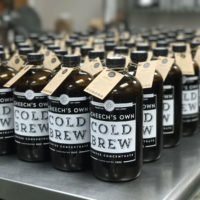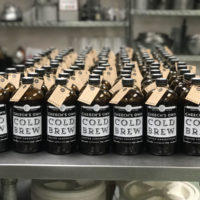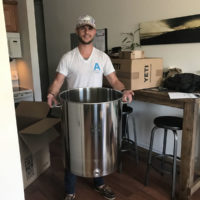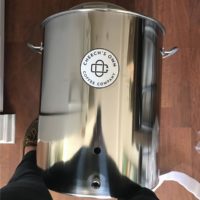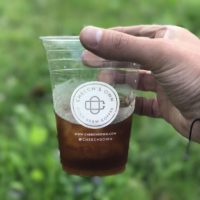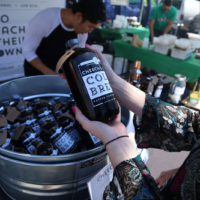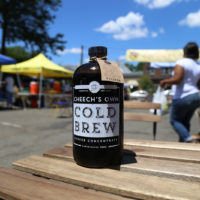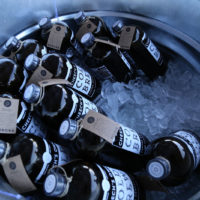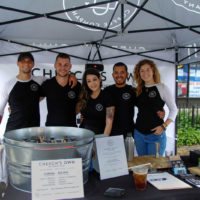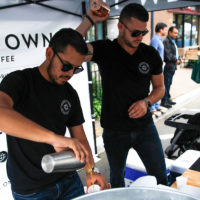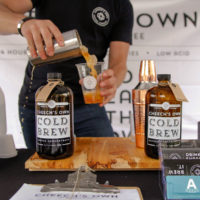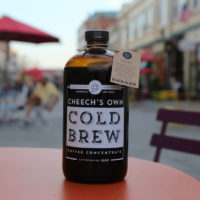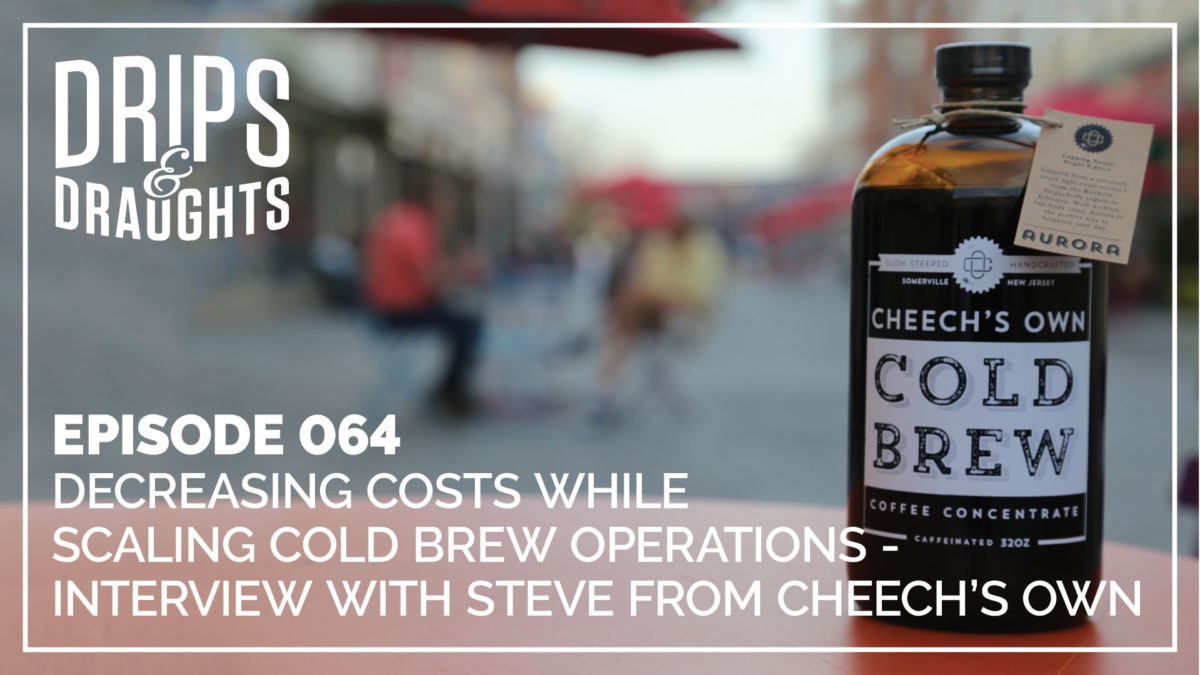
In today’s episode, we’re joined by Steven “Cheech” Chiocchi from Cheech’s Own Cold Brew out of Somerville, New Jersey. Some of our discussion topics include starting a side business and growing/scaling it, working in a shared space, bottling, trial & error and much more. Thus far, Cheech’s Own has been growing organically through a heavy presence at farmers markets as well as at local festivals and events.
Highlights & Takeaways
Organic growth through a consistent schedule at local farmers markets/events.
Decreasing costs by purchasing in bulk and reviewing processes (Six Sigma)
What we mentioned on during this show
Episode 64 Transcript
Brendan Hanson: All right, you’re listening to the Drips & Draughts podcast. As always, I’m Brendan Hanson. We’ve got Cary in the studio with us today. We’re joined by Steve from Cheech’s Own. How are you doing Steve?
Steve: I’m good. How are you guys?
Cary: Doing good.
Brendan: Doing great.
Cary: Thanks for coming out.
Steve: I’m very happy to be here.
Brendan: Awesome. I didn’t want to butcher your last name, so I’ll let you introduce yourself really quick.
Steve: Sure. It’s Chiocchi actually, hence Cheech. Everybody just shortens it up and it just turned into Cheech after high school.
Brendan: Right on. Well, mind giving us a quick background on yourself?
Steve: Yes, sure. Where do I start? I’m I guess what most people call a multi-startup entrepreneur. I’m 29 right now, about to be 30. When I was 20 years old, I quit my full-time job when I raised about half a million in funding for a mobile application startup, which is very similar to Groupon, or if you guys get Valpak over in California or not, but they are like coupon deliveries.
I made an app that automates all that, and tracks it, and lets people redeem it and empowers local businesses to bring more people in. I did that for about three years, and then just got interested in other things. I sold the company to another local marketing product and just started another agency after that, and dabbled around with web design and web development. I learned really quickly that hiring your best friends or good friends as business partners sometimes doesn’t work out.
[laughter]
Steve: I actually left that for a higher paying salary job and moved through my twenties doing director of business development for marketing agencies and stuff like that. I just learned really quickly that I am not somebody that can work for or under anybody at all. [chuckles]
Brendan: Entrepreneur in your blood, huh?
Steve: I just can’t. I flex and I bust out of every single scenario that involves a cubicle. Then I moved to Florida for a little bit and I started another agency called The Areli Group, which currently still has the lights on and is doing very well. That brings me to where I’m at now, balancing the agency. I started making cold brew in my kitchen and serving it out of mason jars to my friends and to local businesses as just a free treat.
It turned into a real thing really quickly last year. Now I’m doing our second year as a formal company called, Cheech’s Own Coffee Company. Our main product is organic cold brew that we bottle as a concentrate and distribute all over Central New Jersey.
Brendan: Right on, so you’ve been around a bit-
Steve: Yes. [laughs]
Brendan: -and all before 30.
Steve: Yes, yes. I still got a couple of months to go. What else do you guys want to do?
[laughter]
Cary: You’re only doing it in New Jersey though right now?
Steve: Right now, New Jersey and — because I have an agency that’s national and global client base, sometimes I deliver cold brew to my favorite clients for holidays and special occasions. But right now, I focus on — I believe in building a culture around it and getting local loyalty and all of those things. That’s what I’m finding is working best for the company right now.
Cary: Sure.
Brendan: It’s cool. Is it just you owning and operating Cheech’s Own or do you have partners in that business?
Steve: At this moment, I am a sole proprietor of Cheech’s Own. I have interest from several parties to come in as an equity partner and we’re discussing those things through legal help, like lawyers and whatnot. But, I do have one partner that I’m pretty confident I’m going to be bringing on. He’s actually one of my great friends, and he works with me in the Agency World. He’s down there in the ground level with me. He’s brewing. He’s getting his hands dirty. He’s put in a lot of time. I hope to bring him on as a partner full-time starting in the next 30 days or so.
Cary: Awesome.
Brendan: Right on. More growth ahead.
Steve: Absolutely.
Brendan: Preparing for Summer.
Steve: We need hands.
Brendan: You mentioned you started cold brewing just in your kitchen and mason jars as probably so many of us do, but what was it that really sparked your interest that just made you say, “Okay, this is it. I’m doing this”?
Steve: Good question. I’m sure you guys know and you hear this all the time. I mean, the last two years or so, cold brew has just been everywhere for me, for anybody that pays attention to the coffee scene. There’s a place called Rook Coffee out here in Jersey. They’re on the coast, and in the summer obviously it’s really hot, it’s at the beach. They do really well. They started doing their own cold brewing.
I had this one night a couple of years ago, where I went out late, partied with all my friends, bar-hopped, all that down the shore, it’s what you do in Jersey because you’re stuck in the middle of the state, you want to go towards the coast. I picked up a bottle of that at a liquor store for the next morning, and I wind up drinking it for the first time. I was like, “Wow, this is amazing” like “What is this stuff?” I was so curious. All my friends loved, and I was like, “This is really cool.”
Shortly thereafter, actually Starbucks put it on the menu. I wound up realizing I was spending — you can load up your Starbucks loyalty card for however much, and it’s always a business expense for me. I wind up spending quite a lot of money on cold brew, and I was like, “They have a Colombian there, the Nariño, whatever it is. I’m like, “How hard is this to make?” This was two years ago.
I was doing a lot of research, and there’s really not that much documentation at least at that time. I still think there’s really not enough documentation on cold brew and brewing strategy. I just started making it based on what was out there. I think I found this Blue Bottle Coffee, they’re out in New York, I’m sure you’ve heard of them. They had a guide to making it. I basically just bought a little Filtron Pro off Amazon and just started making small batches and putting them into mason jars.
I’m very familiar with branding. I’ve built and help launch over 500 businesses websites. That includes logo design, branding, voice messaging and all those things. When I went to start brewing my own coffee and create a brand around it, I figured I was on to something here. I wanted to do it right. I’m very into nutrition and all those things, so I wanted to use all the best ingredients, all the best processes. I wound up finding the best beans, organic certified, and where their origins were, and doing a lot of research there.
I just came up with a really good recipe using — actually right now we use spring water. We’re researching right now using reverse osmosis, and the pH levels, and how that impacts cold brew, and TDS and all of that stuff. But spring water really does really cool things to the actual output of a concentrate, in my opinion at least, based on comparing it to Starbucks and other mainstream coffees. That’s where we are now.
Cary: Interesting. That’s a subject we’ve been wanting to really dive into and learn more about is the water effect on the coffee profile.
Steve: I’m getting really nerdy about that right now. I’m working with a couple of companies and talking to them about reverse osmosis, neutralizing water, and then kind of bringing it back up to where you need it. That’s the key. Anybody can do reverse osmosis, but how do you get it where — what is the perfect cup of cold brew? What does that even mean? [laughs]
Brendan: How can you make the best water for making coffee, making cold brew?
Steve: Exactly. I think hot coffee is pretty well documented, but cold brew specifically is definitely in unexplored territory when it comes to water.
Brendan: Cool, we’ll definitely have to pick your brain more about that.
Cary: I was going to say, after you’re done with all your nerdy research, let’s record a second podcast and have this Episode II
Brendan: We call it the brew log. This brew log is basically an excel sheet and we just keep adding cells to it for different variations. You’re measuring TDS, pH, temperature, which your brewer that we use is amazing at measuring and so on and so forth. Yes, definitely, keep you posted on that.
Cary: Awesome.
Brendan: Right on. Yes. Getting into our outline that we put together, there were quite a few things that we had talked about on previous podcasts. I thought it would be cool if we discuss this with you; shared spaces, bottling, selling. Then it looks like you added quite a few trials and errors that you’ve gone through, so we’ll get into those as well. But, let’s talk about shared spaces a little bit. When you started up, was it out of necessity that you were operating in a shared space or just found a good fit for you?
Steve: Well, yes, definitely out of necessity. When you want to create a legal entity and form a company, especially when you’re dealing with food or handling anything like beverages or food, you have to partner or purchase or lease a commercial kitchen and go through all those certifications.
The easiest way for me to get into it at the beginning from kitchen to serving it to a customer and charging them legally without getting in trouble, is to partner with a commercial kitchen. I’m very blessed to have lived in a five story apartment building, my city. They have a couple kitchens below us, and one of them was a culinary company that does catering, and so they’re not really in there at night. I wound up meeting the owner and doing some tradeoffs, building him website and helping him brand his company and take it to the next level. He wound up letting me use his space. That’s how I got into the commercial kitchen space.
Brendan: Nice.
Steve: It was a good tradeoff for me. We’re outgrowing at this point, but there’s no way that I could’ve risked spending several thousand dollars a month on a company that I friends liked tasting, the cold brew. It’s really hard to jump from that especially being somebody that’s a little bit of a Six Sigma background and stuff like that.
Brendan: Right on. Oh yes, I guess we skipped over that. We’re entrepreneurs, I’d never heard of Six Sigma, what is that? You mentioned it’s a decision-making process that you go through?
Steve: Yes, yes. It’s really something that my investor that I had partnered with for my first company, he was a Black Belt Six Sigma Lean. He actually was certified to train other Six Sigma professionals. Six Sigma really is just analytical approach to problem-solving and optimizing manufacturing scenarios, but it can be applied to any business model in my opinion.
For instance, my partner worked for like Hertz Rental Cars, and he consulted with them. He helped them save several million dollars per quarter, just by changing the way that when they take in a rental car, how often they wash it or how they wash the car, by using all those chemicals and using the manpower to wash every car when it wasn’t necessary. That’s just one example.
Another example is, and he owns a couple of manufacturing plants in China for motorcycles. When you purchase a manufacturing plant, maybe it has a hundred motorcycle output per week, by looking at the manufacturing line and how people are doing things and then doing some number crunching and just overall assumption, validation. You can you can optimize that process quite a bit by moving some things around and changing those things. People fall into their ways with manufacturing.
If you have a fresh mind, look at something and optimize it, he actually helped them triple their capacity motorcycles per week by applying Six Sigma practices just at the manufacturing line; moving things around and buying new equipment. That’s what Six Sigma really is all about. It’s just assuming that you’re not doing the best thing you can and always challenging that.
Brendan: Interesting. Very interesting.
Cary: We’ll have to look that up.
[laughter]
Brendan: Well, cool. Getting back to shared spaces really quick, if you had to just name three pros and three cons maybe of a shared space, could you for somebody who might be looking to start cold brewing or start their own cold brew company?
Steve: Sure. Actually listening back to your podcasts I heard some of the pros and cons. For me, the pros are obviously, you have little to no actual monthly overhead as far as finances go. If you can trade-off, that’s great. If you have to pay for it, at least you’re not paying for the whole kitchen space, so that’s a pro. Another pro is, you get to share equipment. If they ever walk-in fridge or table tops and sinks you can use, that’s huge, because let’s face it, buying that equipment is very expensive. It actually increases the output that you have to, the money you have to outlay to get a business started.
For me at least, another pro of having a shared space is, somebody has already built a pretty successful business and they know other people that have built successful businesses. You’re automatically within their network. They obviously believe in you because they’re bringing you into their world; they’re trusting you to use their equipment, so you get a little bit of a mentor’s relationship. Especially when you’re stepping in from — like for me, I work on a computer most of the day, let’s face it, I own an agency. Stepping in the cold brew, it’s completely different.
You have to understand methods and procedures that have to do with food safety and food handling. Having someone that’s done that before, that owns a kitchen, it’s really helpful to have. You don’t cut corners, but you get to the real stuff really quickly. My partner at my kitchen has helped me quite a bit understanding all that stuff.
Cary: Those are pros?
Brendan: Yes. Definitely decreases the learning curve because, yes, imagine having to go do that all on your own in your own space.
Cary: Right. It’s almost like having free mentors, they’re with you almost.
Steve: Absolutely. Yes, absolutely.
Brendan: Any cons?
Steve: We’ve worked around the cons. Personally, I’ve worked around the cons. For me, I guess, if you don’t have access to the kitchen at all times, that could be a problem. I worked around that by building trust and getting my own key. Another con I guess could be, if somebody else is working in the kitchen, you could have cross-contamination or just run into each other doing certain things. I got around that by just brewing at night while they weren’t using the kitchen.
I can’t really think of any other cons really as far as in my experience. Like I said, I was pretty blessed. [chuckles] It was really easy for me to get in there. I’m actually really good at pulling that stuff together.
Brendan: Yes. It sounds like you got a pretty sweet deal there.
Steve: Yes. I’m happy about it. Yes.
Brendan: If you had to give one piece of advice about shared spaces to a person or a company who is just getting into cold brew, what would that be?
Steve: Well, first of all, find a shared space. Find somebody that believes in your business model. Find somebody that can believe in you as an entrepreneur, and go for it. It’s the number one thing that got me leapfrogged to the next stage. Without that opportunity, I could not legally or confidently sell to consumer, and I couldn’t grow nearly as fast as I have been growing.
I just don’t see any other way unless you’re going to take out a loan from a bank or find an investor for something that you’re not 100% over, you don’t have to earn for, which just seems silly coming from a lean startup background.
Brendan: Sure. Cool. Well, moving. Let’s talk about bottling a little bit. I think you mentioned you do all manual bottling currently?
Steve: Yes. It’s not the most fun thing in the world, but let’s face it, you got to monetize what I’ve built so far. Right now, I have pretty good relationships with all of my suppliers. I’ve been able to get my retail price down quite a bit by buying in bulk, and that comes from selling product. But bottling has been a huge, huge controversial thing.
Locally it’s fine to sell at farmers’ markets and bottle and do it by yourself. But as you scale, what I’m finding is you hit a wall with the FDA and you have to go through several different approval processes. You have to get — I believe they’re called process — it slipped my mind right now.
Brendan: Process authority [crosstalk]
Steve: Yes, process authority is to come in and look at what you’re doing. All they’re going to tell you is you have to either pasteurize or filter certain way, or store a brew in cold temperatures, and there’s so many different ways to go about it.
Navigating that space as a start-up without tons of capital — I mean I’m talking to HPP companies, which is high pressure, pasteurization companies. I’m talking to co-packing companies. I’m talking to mobile canning companies. I’m talking to all kinds of different companies to try to figure out how you can get self-stable, because that’s really the key.
The key to this is getting self-stable, and getting that sample of approval, and getting through those barriers to be able to get to like Whole Foods. For us it’s like ShopRite which is a huge grocery store. But for now, to monetize in the meantime, you have to partner with farmers’ markets, and you have to get into local natural food markets that will let you sell based off of the fact that you brew locally and stuff like that.
Bottling has been a huge problem. I use glass bottles. That’s [chuckles] a whole another thing. I did it at first out of impulse based on what a lot of other people were doing, which in retrospect, it’s a great way to start. But I’m finding that plastic is definitely something that we have to consider at scale for sure. You can’t high pressure pasteurize with glass, and shipping at scale doing online ordering with glass. I mean, you’re talking about tons of weight in the box and FedEx charges you so much per pound. There’s a lot of factors there.
Brendan: Absolutely.
Cary: It sounds like you guys are leaning more towards the HPP method or pasteurizing moving forward then?
Steve: Yes. Just yesterday, I was talking to one of the local HPP facilities. They’re saying as far as co-packing goes, I have to send them my product if it’s under 3,000 bottles. I have to send them my product, and then they send it back to me. Or, if they were going to co-pack, it has to be 3,000 bottles. If you don’t have the demand for your product, it’s a struggle.
Cary: For sure. I can imagine in deciding that too. I mean, you talked about heat pasteurization which you may or may not want to do because that’s going to affect the flavor and the outcome of your product. Filtering down to a lower micron, some people don’t like to do that to preserve mouth feel and different things. I can imagine that would be a tough kind of road to go down and decide what’s best for the company and for your product.
Steve: Absolutely. There’s no way I’m adding heat to my product. It’s not even an option for me. The high pressure, you have nitrogen dosing, which I know you guys are familiar with. That’s in a whole other avenue that I’m talking to a couple of companies about, which was why I brought up the mobile canning because that’s a whole other thing.
Brendan: Yes, can instead of bottle.
Steve: Yes.
Brendan: Currently, when you bottle, are you batch bottling and then taking those to farmers’ markets and selling them there? Are you basically filling them like growler fills from draft or some of both?
Steve: We are messing with, and I’m sure you know Cary, we just purchased a nice little nitro set-up from you. We’re dabbling with kegging and nitro brew and stuff like that. But for me right now, I’m basically batch brewing, double filtering through your system, and then bottling immediately and throwing it right into the walk in. Into 12 pack boxes of 32-ounce growlers — they’re mini-growlers. They’re Boston rounds.
We have a nice little branded set-up. People love the bottles. We’re going out the farmer’s markets. We’re selling them there. We have about a 30-day shelf-life that I’m confident in; I’ve had it in my fridge for three or four months and it’s fine. It still tastes great after two months. Three months you start to taste some effect of oxidization, but, I’m very confident in the 30-day shelf life.
Cary: Wait till you try a year. [laughs]
Brendan: Yes. Set it on your counter and let it sit there for a year.
[laughter]
Steve: Did you both try that?
[crosstalk]
Cary: Oh yes, it was terrible.
[laughter]
Cary: Yes, it was so bad.
[laughter]
Steve: I forget which one of you it was. I think it was you Brendan. You weren’t really down to try that.
Brendan: Oh, yes. We just kept delaying, looking for papers on my desk to read.
[laughter]
Cary: Looking for a beer instead of it.
Steve: I think one of your episodes I was listening to, and I forget who it was on there, but saying wine where you had to try decanting it and let the air have its effect on it again and swirl it around a little bit. I don’t know, I haven’t tried that. But, I tried a five-month-old bottle that was sitting on top of my refrigerator at my apartment. Honestly, it wasn’t that far off from the original taste in my opinion. Yes, room temperature; no mold, nothing growing in it.
Brendan: We’ve been doing some talking. We’d like to do the same experiment, but do some nitrogen purging, fill bottle all the way because this one just had a–
Steve: I saw that bottle [crosstalk] I can’t believe you guys you even drank that.
[laughter]
Brendan: Yes.
[laughter]
Steve: Hilarious.
Brendan: Well, cool. What have we got next on here? We’re talking about selling, farmers’ markets and partnering locally to raise awareness. I am sure a lot of that just comes through you working out of the shared space. Anything else there or?
Steve: Definitely investing in the larger festivals, and investing in the farmers’ markets for this season. A lot of the farmers’ markets here, at least for us, they let you pay by the week. It’s really easy to get in there and get started. If you have a great brand, and people love cold brew right now. I mean, people are like, “What is that? That sounds cool. Okay, we’ll pull you in.”
A lot of farmers’ markets are exclusive, so you can’t get in if you have the same thing as somebody else. Cold brew is something so niche and new that you can really get it anywhere, and get in anywhere. At least in our market, you have Starbucks and you have a couple of local cafes that serve cold brew, but nobody’s bottling it and branding it and calling it like, “New Jersey’s best cold brew.” That’s where we’re having success.
We’re at five farmers’ markets a week, it is a hustle let me tell you. I’m bringing my laptop. I’m doing conference calls for my other business. I’m answering e-mails and sending out invoices, and writing contracts while at these farmers’ markets. But, Wednesday, Thursday, Friday, we’re at three different farmers’ markets across New Jersey. Then on Sunday we’re doubled up at two farmers’ markets. Then we have events sprinkled in all throughout the summer, and you’re talking 25 week seasons. I’m already exhausted just thinking about this summer.
Brendan: Man, and you’re in your 20’s man. You got no time to get in trouble.
[laughter]
Steve: That’s right.
Brendan: You’re too busy.
Steve: I’m already thinking about filling Saturday in too because what we’re finding is the more people that I can expose to my product. I feel like I have a pretty unique value proposition and message with my product. What’s unique about it is, Cheech’s Own, I’ve decided to — you know how a lot of brands will say, “We, we, we, us, us, us” and I’ve seen in the start-up scene, a lot of people will say they’re bigger than they are.
Being a web entrepreneur, I’ve noticed it’s one guy in his basement running a mobile app. That’s what I wanted to avoid with this business. I want it to be completely honest. That’s kind of where I went with Cheech’s Own as a brand. People really like that. People like that it’s local. People like that I’m the person that is brewing and at the forefront of it.
All of my branding, and all of my messaging, it’s almost like I never character. Even though I do now have a larger team to work with, everything goes through me. Everything that goes out is first person and it’s all about coming from Cheech’s Own, almost like Burt’s Bees. I find that the more places I can expose that idea and that brand, this brand to, the more people that just fall in love with it.
They’re very quickly signing up for our e-mail list. They’re visiting our website. They’re purchasing online, following us on Instagram. Instagram is a huge channel for us. Yes, it’s been great. I think farmers’ markets are huge; they’re like an untapped underground way to grow a business in between being super-small and being medium-sized.
Brendan: Sure. You said you sell online. Are you currently just selling locally in New Jersey or can we have online and have some sent to California?
Steve: I will ship you guys whatever you want. I’m sure it would be fine. I just recently shipped a bottle to my friend that moved out to Maui, Hawaii, and she’s drinking it. To answer your question directly, if you put your zip code in on my website since we — like I said, I own an agency, the web design aspect of this business and the branding stuff, it comes second hand to me.
We built a cart that locks you into a certain geographic range. That’s the tri-state area. But we try to stay as local as possible with shipping, just because, again, there’s such a fine line between getting out of a shared space, getting into your own kitchen, and then there’s a very fine line of getting into big ticket wholesalers or retailers. We try to stay very local without much shipping, and then we make that very clear. Like I said, I’ve shipped the bottles across the country into several different areas, and it holds up.
Brendan: Awesome.
Cary: Good stuff, we need to get some.
Brendan: Yes, we are going to have to. All right. Moving down the list, I see we’re talking about some of your trials and errors that you’ve gone through. I see you’ve put quite a few bullet points in there. I’ll just read through these and let you explain. First up, you mentioned using the Filtron Pro and the organic cotton filters.
Steve: Yes. When I first launched the brand, it was all about using the Filtron Pro and organic cotton and just using everything BPA-free organic. That was all I was exposed to at the time. Filtron Pro was good for — we have like five of them, it was very good for that stage of the business. When you start to scale and you think about shelf life and cleaning these bags, there’s something about it that even if you boiled them, just didn’t seem very scalable. Actually, at one point I called the company that distributes Filtron Pro, and I’ll ask them, just kind of interrogating the owner. This is what I do.
Brendan: Interrogate?
[crosstalk]
[laughter]
Steve: “I just want to know who else is using these things? Is this safe?” that kind of thing. I need to know; you know what I mean? And you saying — I forget the actual roaster, I don’t want to call them out on the air. But there was a very large company that is very well known for cold brew using about 60 of these Filtron Pros up until last year. But the Filtron Pro System for me, I just outgrew it. If you never used one — have you guys ever used one?
Brendan: No, not that one to be honest.
Steve: It’s quite a hassle to drain. You got this bag and you’re literally after it drains which it gets clogged twice. I love Filtron Pro, they got me started, but this is the reality of the situation. At least with my coffee in the way that I was grinding it, and the style of brewing that I was doing. You swap the pops out once or twice throughout the brewing process just like felt pops.
Then at the end of it, you want to get as much cold brew out of the bag as possible. You’re sitting there with gloves on and you’re twisting the bag and draining it, and it just wasn’t, it just didn’t feel — it was way too manual intensive. That’s why I switched to looking for something stainless steel, something scalable, something that drained really well, and that’s where I landed on finding you guys actually.
Brendan: Awesome, right on. All right. Next step, outgrowing your kitchen and making things “official”.
[laughter]
Steve: Yes. Again I was using the Filtron Pro in my kitchen and I was bottling in mason jars. Then if I wanted to get into this really giant craft group festival that I wanted to be at, I had to legally form a company last year, and I had to partner with a local kitchen. I was kind of forced to do that.
It was a little tough because I had to switch up my equipment a little bit just to be safe. The health inspector wasn’t cool with it; that’s another thing with the cotton bags. That’s where the stainless steel came in. It was a cool, the whole process of boiling it, it was just like this just seems very witchcraft and I’m like, “Okay” like, “I’ll figure something else out. Give me week, I’ll figure that out.”
[laughter]
Brendan: Yes, it’s funny. That seems to vary from, I don’t know, if it’s city to city or state to state. But, yes, it seems like there’s different rules and regulations around that wherever you go.
Steve: Yes. That’s my experience. Even talking with other people, it’s very localized. What one health inspector will say to you as opposed to somebody else in another state can vary depending on just, I guess worse-case scenarios that have happened in that area. That’s the only think I can estimate, like I guess something happened then they make a law, you know what I mean?
I had to switch over that. It was a little stressful. I was going around asking all my friends that own restaurants to partner with me. But I wound up landing on this really great guy that allowed me to come into his kitchen and use it at night.
Brendan: Nice. Yes. You mentioned the boiling that bag and cleaning that and how that could be a hassle. I know I’ve seen a couple of those big filter bags in some shops. I looked at them and think, “Man, I would cold brew coffee myself.”
[crosstalk]
Steve: There’s a difference in that point. That’s a difference. Actually, I have a funny little side story if we have time.
Brendan: Yes, absolutely.
Steve: Again, I’m very, very like seize the moment. If I see something that is — if I think it’s even like an increment, a good idea, I will at least investigate it. Filtron sells their bags for 20 bucks for organic cotton. I wind up starting to figure out, “How do I scale this? I can’t be buying these bags and disposing them every month. It’s just so expensive.” Like, “You guys have that stainless steel filter. How many times do I have to throw that out?” None. I just clean it.
The bag thing just didn’t seem scalable. But to mitigate that, I was like, “Okay. Well, maybe I can buy organic cotton.” I found a couple manufacturers of organic cotton or importers, then I started to — I actually went so far as to go into North New Jersey and sit down with the owner of a sewing company with fabric to basically mass produce it.
Brendan: Take a sewing class. [laughs]
Steve: No. I was going to hire him to basically mass produce these bags. Actually I thought, my pricing was so good where I was getting this cotton that I could — I was going to actually go heads-up with Filtron and just say, “Hey, here’s something that fits the Filtron and its organic cotton and it’s 10 bucks cheaper.” But I just decided to focus on what I’m good at with the cold brew and my agency in the long term. But, yes, that’s how far I go with things sometimes.
Brendan: Yes, every little thing like you mentioned with the water.
Steve: Exactly. Yes.
Brendan: Right on. All right, so next step we got your grain setting, bean origin and roasting strategy. Do you roast your own beans or you are going to like a local roaster?
Steve: Oh, that’s a whole story in itself. I don’t roast my own beans. But, I walked into a roaster, the only roaster I’ve ever known to be. When I was younger, I grew up in another part of New Jersey which was — some people think of New Jersey from New York’s perspective which is, the smog on the horizon, it’s very industrial on the border of New York. Then as you get into Central New Jersey and explore a little bit, you see that there’s actually a lot of farms here; it’s called the Garden State for a reason.
We’re on the border where I was living which is like the rural area of New Jersey at the time I was living out there. I stumbled on this café that had a roastery attached to it. I was just like, “Oh, that’s cool to make their own beans.” That’s how I got into coffee, like at that place. It’s called Homestead Roasters. I wind up walking in the roastery one day and I was like, “Hey, what’s this place?” The barn doors were open, just this big huge barn out this farm in Pennsylvania.
The owner walks up to me, his name is Michael Lewis. He was just the nicest guy in the world. He just let me come in and look around and starts talking to me about coffee. Since I started making my own cold brew, he is the first guy that I called because of that experience.
Ever since then, and we’re talking years back, ever since then, he’s been my best buddy when it comes to roasting strategy. He’s literally changed his roast, he sourced for me. He helped me get into cold brewing in general, like taught me how to do it. I feel like, and Michael if you listen to this, don’t take it offensively, but I feel like now you’re taking notes from me. Because all I do is cold brew all day and you have a lot of other things going on. We share a lot of knowledge now. Just yesterday, I learned through a lot of the events that we’re doing that people want — for me, there’s three different types of people with cold brew.
I think anybody listening to this podcast can take value from this, because you go through A/B testing. You can do so much in your own brewery. You can taste so much, but you have to share with people to really see the looks on their faces when they taste it and get that feedback. Through my experience over this season at least, we have this one brew called Aurora, which is an Ethiopian [unintelligible 00:40:01] region, light roast. It’s very light. It comes off like a black tea.
You got a guy that makes his own cold brew at home coming up and tasting that, and he’s like, “This is garbage. This is way too light.” But then you have a woman that drinks tea all the time that’s never had cold brew, and she walks over and she’ll taste it and she says, “Wow, this is amazing. I don’t like coffee, but I love this” and she’ll buy a bottle.
That was kind of my cold brew for me because I didn’t like the Columbian. I didn’t like what Starbucks was offering. I thought it was just way too strong. I love it compared to a hot brew, but I thought there can be better cold brew. That was the first brew that we came out with which is called Aurora, and we wanted to make it like the light, why is why we named it Aurora.
Then moving forward past that, my roaster helped me find a bean from Indonesia, single origin that we call Eclipse which is — basically it eclipses Aurora. It’s a French roast so it’s much darker, it spends more time in the roaster. I learned all these through trial and error with him, Michael, at the roastery. That is a great option for guys that have either never ever heard of cold brew and they really like really dark coffees. Or, people that just got into cold brew and just appreciate French roast.
Now what I’m finding after just having those two for this whole season is, we need a darker roast. Because, we have a third kind of person that loves cold brew. They love dark coffee and they want the strongest most potent thing in their mouths anytime. The hard core coffee people, I’m finding that they want something darker, so we’ve already branded and name a new brew. We’re just experimenting with–
Brendan: Looking for the right roast?
Steve: Literally, just today, we got an order and I called Michael last night or two nights ago, “This is how awesome awesome my roaster is. He heard me out. I was like, “Look. We need something darker for fanatical people that love cold brew and want something strong as hell.”
He was like, “All right. Well, give me some options” and I was like, “Let’s go with the Columbian because that’s what Starbucks is doing, but let’s go with an organic Columbian. Let’s go with the darkest type of roast. Let’s go with an Italian roast.” That’s sitting in downstairs in the kitchen now, and we’re going to do some experiments with it. But I have high hopes.
Brendan: Nice. Awesome. Yes, that’s cool. What a great contact and relationship you have there.
Steve: Yes. He’s awesome.
Brendan: Cool. Your next point was what we just talked about how you can narrow focus by only having a couple of different brews. It sounds like you’ve had two and you’re adding a third. Almost something for everybody without going way overboard.
Steve: Yes. Absolutely. Like I said, that just comes from testing and getting feedback.
Brendan: Nice. Then, your last two bullets here were a couple of things you’re working on, USDA certification and also Fair Trade certification. Are you trying to get your cold brew certified?
Steve: Yes. The process is — do you guys have any experience with us?
Brendan: No.
[laughter]
Steve: Zero. The process is interesting. Especially, I mean it depends who you talk to. USDA, you can talk to several different local authorities that are, I guess certified to certify. USDA, you have to have all your products that come down in line through your supply chain have to be organic, USDA certified already. Basically, you just have to just buy into it. At this point, all I have to do is pay a somebody that certifies to come in and look because I’ll just go right through, because using spring water and USDA certified organic coffee.
But the Fair Trade is more interesting to me. It’s like taking ownership over the supplied chain from the farm, and it’s very interesting. That’s another thing. You have to pay a couple thousand dollars to get. But I think there’s a misconception with a lot of people seeing this logo, and if you don’t have it you’re not organic. If you’re a local business and you’re just starting out and you can’t afford the few thousand dollars that it takes to get the certification, you still can be organic. You can still tell people that you do organic practices. Don’t be afraid to say that.
Brendan: Right. You just won’t have that stamp, right?
Steve: Absolutely, yes. There’s probably tens of thousands of businesses that are qualified for USDA organic certification but they can’t afford it or they haven’t put their money or their time into investing in that certification.
Brendan: Yes. I think we have had a few clients tell us that [crosstalk] they’re all organic, they just can’t label it that way.
Steve: Exactly. Yes.
Brendan: Very interesting. All right, man. Well, I think we’re getting to the end. Of course, the million-dollar question that everybody asks us so we try to ask all our guest is, your cold brew method ratio, steeping time, temperature, you mind sharing any or all of that information with us?
Steve: Sure. [laughs]
[laughter]
Brendan: As long as it’s not any trade secret.
Steve: No. This is why I think I got to that third — like we’re experimenting with extremely dark ratio, extremely dark roast and trying to get to that really strong cup of cold brew. But personally, all of my cold brews come from a personal opinion and a personal taste. I think that’s translated well to who we sell to and what they like. Obviously it speaks for itself; it sells very well. It’s very easy to sell the product when we put it in front of people. But the ratio for me right now, is a five pound to 10 [gallons] of water. I’m sure your jaw is dropping with that.
But there’s a lot of — I’ll actually may stir like 15 times in between, which I’m trying to actually figure out a way to use a machine to do that inside of your brewer. [laughs] Steeping time, I always steep for 24 hours on the dot, every time. We’ve tried 12, we’ve tried 16, 18, we’ve done 36. 24 seems to be a really great spot for the grind setting up that I’ve chosen to stick around the grind range. I’ve chosen to stick around.
Temperature; it’s interesting to measure it, but let’s be real, it’s really hard to keep it consistent. I always brew in the same commercial kitchen, which I think the temperature’s swing a little bit, because once it hits a certain level the air conditioning will kick on or whatever. But we brew in room temperature. It various. I don’t know, I find it pretty consistent. I don’t think temperature impacts it as much as people think, but I’m also not sitting there trying to control the temperature so much and then taste it and have a ton of people tell me their opinions on it, so yes.
Brendan: Right.
Steve: Other variables; I think water is honestly one of the biggest variable. Water and grind setting are the two biggest factors in my opinion. You’re going to have issues if you grind too fine. It’s not going to taste right if you grind too coarse. Then if you’re using a water that’s like a tap water, you just get out of the game. [laughs] You have to be measuring your water quality, and you have to be measuring your TDS, in my opinion.
I think there is a sweet spot there for us, it’s 25 to 50 when you drop it in the bucket. Afterwards, it’s very consistent across the board depending on the origin. What comes out of it as far as TDS. It’s interesting, it will range from 200-300 TDS between origin. There is a difference in what you start off with and what you get, with origins and with water quality. Then pH is a whole another world, you know.
Brendan: Right. That’s something else we wanted to start looking into.
Cary: For sure.
Brendan: We’re going to have hopefully some water experts on in a future episode. Then it’d be great to circle back with you and maybe do an episode on your thoughts on water, and some of the stuff that you like to tweak, to play with.]
Steve: Absolutely. Yes. I’m working with the company right now that has asked me to co-brand with them, but I’m still just trying to find the right ratios with them. But the founder is a very, very smart guy and he’s been doing water for like 30 years. He has custom filtration process — technology I should say — that he wants me to implement. We’re dabbling right now. I definitely, I have more to talk about in the next 30 to 90 days.
Brendan: Awesome. Yes. It sounds good. Well, cool man. I think that pretty much wraps it up. If people want to look you up online, where could they go to do that?
Steve: Yes. You can visit us online at www.cheechsown.com, that’s C-H-E-E-C-H-S-O-W-N .com. Instagram surely that’s for looking at the brand I guess and seeing what Cheech’s Own is all about. That’s just @Cheech’s Own. We’re obviously on Facebook and Twitter and all the other places, but the website and the Instagram are really the main two core things that I’m focusing on.
Brendan: Cool. Well, we’ll make sure to put links on the show notes. Yes, man, I appreciate it. I appreciate you taking the time to hop on here with us today.
[crosstalk]
Steve: Thanks again. Thanks Brendan.
Brendan: All right, Cheech.
Steve: Thanks.
Brendan: Okay.
[background music]
